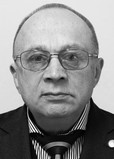Energy zoning to manage training process in academic physical education
Фотографии:
ˑ:
Dr.Med. V.G. Chernozemov1
PhD, Associate Professor Y.S. Zhuravleva2
PhD, Associate Professor A.V. Tsinis1
PhD, Associate Professor M.A. Abramova1
1Northern (Arctic) Federal University n.a. M.V. Lomonosov, Arkhangelsk
2Peoples' Friendship University of Russia, Moscow
Sampled for the study purposes were the first-year female students (n=108) whose physical fitness, speed, strength endurance, flexibility, overall endurance and static strength were rated in the academic physical education process. For the energy zoning purposes, we recorded their heart rate versus training workloads (exercises per minute). The physical fitness and functionality rates were found the training workload and energy zone specific according to the relevant classification of the training workloads.
It was found that the trainings in the academic physical education process were dominated by workouts in REC and EN1 zones without attention to the speed developing practices. It is due to the shortage of the training loads (including maximal ones) in the relevant zones that the speed and coordination qualities were found underdeveloped in the trainees. Based on the study data and analyses, we recommend to make the academic physical education process more versatile in every semester by the high-intensity trainings in aerobic-anaerobic EN3 zone (HR of 160-180 beats per min) and anaerobic SP1 zone (maximal HR).
Keywords: females students, body conditioning, training loads, energy zones.
References
- Verkhoshanskiy Y.V. Osnovy spetsialnoy fizicheskoy podgotovki [Fundamentals of special physical training]. Moscow: Fizkultura i sport publ., 1988, 332 p.
- Kolmogorov S.V., Avdienko V.B., Rumyantseva O.A. Energeticheskoe obespechenie plavaniya sportsmenov [Energy supply of athletes' swimming]. Moscow: Russian Swimming Federation publ., 1998, 71 p.
- Pushkina V.N., Kornev A.V., Olyashev N.V., Kochnev A.V. Differentsirovannoe fizicheskoe vospitanie studentov na osnove konstitutsionalno obuslovlennykh markerov [Differentiated academic physical education based on constitutionally conditioned markers]. Teoriya i metodika fiz. vospitaniya i sporta, 2016, no. 3, pp. 59-61.
- Pushkina V.N., Olyashev N.V., Pogorelova O.V. et al Povyshenie effektivnosti fizicheskogo vospitaniya studentok sredstvami step-aerobiki [Effectivization of physical education of female students via step aerobics]. Electronic scientific publication 'Mir nauki', 2016, vol. 4, no. 6. Available at: http // mir-nauki.com // PDF // 34 PDMN616.pdf (date os access: February 17, 2018).
- Razmakhova S.Y. Raspredelenie trenirovochnykh nagruzok po zonam energeticheskogo obespecheniya v techenie uchebnogo goda u studentok universiteta [Power zone distribution of training loads for female students throughout academic year]. Sovremennye problemy i razvitie fizicheskoy kultury i sporta [Modern problems and development of physical education and sports]. Arkhangelsk, 2003, pp. 95–98.



 Журнал "THEORY AND PRACTICE
Журнал "THEORY AND PRACTICE